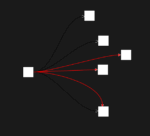As digital transformation accelerates, ensuring visibility across complex data pipelines and distributed services has become a top priority. Successful organizations recognize that a one-size-fits-all approach to monitoring no longer suffices in environments where microservices, multiple data sources, and cloud platforms coalesce into a sprawling network of interdependencies. Enter the concept of an observability mesh: a comprehensive framework that weaves together metrics, events, logs, and traces under a single, robust umbrella. This approach empowers decision-makers with real-time insights, enabling proactive problem-solving and strategic planning. At our software consulting LLC, specializing in data, analytics, and innovation, we see an observability mesh as more than just technology—it’s a strategic blueprint for sustaining agility and resilience in modern enterprises.
By establishing a holistic vantage point, organizations can better understand how services interact, spot bottlenecks before they spiral out of control, and nurture a culture of continuous improvement. Rather than relying on siloed solutions, this mesh approach acts as connective tissue. It layers unified data gathering, dynamic dashboards, and automated anomaly detection to offer a panoramic perspective of system health. Whether you’re harnessing PostgreSQL Consulting Services or picking the right visualization techniques from the top 5 data visualization tools for 2023, the key is ensuring all your data flows into a single framework, offering end-to-end visibility. The observability mesh stands as a cornerstone in the shift from reactive, ad-hoc troubleshooting to proactive data-driven strategies, paving the way for predictable scalability and unwavering service quality.
Understanding the Evolution of Observability
Monitoring and logging have been around in various shapes and forms for decades, but traditional approaches often focused on singular metrics, such as CPU load or database response time, without considering the broader context of system interactions. As cloud computing and containerization took hold, the volume of data and speed of change began to outpace the capabilities of these narrower solutions. Modern organizations need holistic insights, not just discrete signals. That’s where observability steps in—providing context and correlation among logs, metrics, and distributed traces across multiple layers of an application stack.
Over time, the evolution of observability has paralleled the rise of DevOps and DataOps cultures, reflecting a need for shared responsibility and cross-functional visibility. For instance, deploying a Google Analytics Tableau Dashboard can illuminate how marketing campaigns correlate with back-end load, while analyzing data on the use of transportation services can inform traffic distribution during peak hours. These real-time insights reduce guesswork, enabling teams to pinpoint issues swiftly and deploy fixes without disrupting workflows. Ultimately, modern observability practices reflect an industry-wide push for continuous improvement, enabling organizations to adapt quickly to new customer demands, compliance requirements, and market disruptions. With data and applications no longer confined to a single on-premise environment, observability has become the guiding light for both operational stability and strategic foresight.
Key Components for an Observability Mesh
An observability mesh is built on three foundational pillars: data ingestion, data correlation, and data visualization. First, data ingestion must be as frictionless as possible, capturing metrics, logs, and traces from every layer of the technology stack. This includes structured and unstructured data sources, such as application logs, infrastructure metrics, and even business KPIs. Second, the mesh needs to correlate these distinct data points in a meaningful way. Tools must connect the dots between, say, an increase in user sign-ups and a spike in database queries or application latency. Understanding such causal links is paramount to addressing issues swiftly and effectively.
Visualization serves as the third, and perhaps most crucial, component. Without clear, actionable dashboards, even the most comprehensive dataset can become an unmanageable swamp. Creating intuitive, real-time views of your distributed ecosystem allows key stakeholders to respond effectively. Whether you’re exploring why data modeling is the blueprint for data-driven success or predicting the future of maintenance to minimize downtime, a strong visualization layer becomes the control center of your observability mesh. By pulling together information from multiple sources, it helps teams see correlations in business performance, infrastructure usage, and customer engagement all in one place. A robust observability mesh does more than just highlight problems—it lays out a roadmap for optimization, helping enterprises stay ahead of both technical hiccups and market shifts.
Strategies for Implementing a Holistic Observability Mesh
Implementing an observability mesh calls for a focused, strategic plan. Start by cataloging all data sources across your organization—from application performance metrics to business analytics. Next, invest in tools and platforms that facilitate seamless data collection and correlation. Since the mesh is meant to be comprehensive, it’s crucial to handle connectivity among microservices, containers, and on-premise systems. Collaboration is key: establishing a shared data language across DevOps, DataOps, and business intelligence teams fosters buy-in and reduces the risk of siloed implementations.
Ensure orchestration tools are configured to automatically scale monitoring components as workloads grow. Constantly refine alert thresholds and automate the detection of anomalies so issues can be identified as soon as possible. Finally, plan for change. With the pace of technological advances—consider the future of data processing that quantum computing may unlock—it’s essential to view your observability mesh as a living blueprint. As new data sources, frameworks, or cloud vendors emerge, your mesh should easily adapt to incorporate these changes without overwhelming your organization. By remaining agile and building your observability strategy on a foundation of collaboration and automation, you’ll set the stage for predictable performance, secure data handling, and enhanced operational resilience.
Driving Innovation Through Observability
A well-architected observability mesh doesn’t just fix problems—it sparks innovation. By illuminating inefficiencies and highlighting new opportunities, observability becomes an engine for growth. Imagine how quickly your teams can deploy new features if they trust their monitoring systems to alert them about performance degradation or resource contention. Diversification of data analytics, real-time dashboards, and predictive insights can reveal untapped market segments or product enhancements that would otherwise remain hidden. When observability is woven into the corporate DNA, experimentation flourishes, and the cost of failure diminishes because issues are quickly identified and contained.
Beyond alerting and troubleshooting, these insights foster a culture of continuous learning. Teams can iterate on user behavior metrics to fine-tune user experiences, ensuring that new functionalities align with actual customer needs and expectations. Integrations with external data sets—such as those gleaned from SaaS applications—can combine with internal application logs to provide a richer perspective on cross-functional performance. As more enterprises rely on advanced data strategies, the role of observability grows increasingly critical in maintaining alignment between business objectives and technical execution. By bringing transparency and real-time insights to every layer of the organization, the observability mesh becomes the foundation for sustainable, data-driven innovation.

























